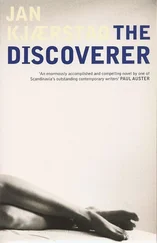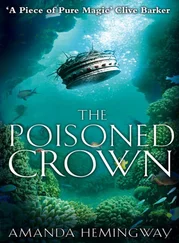It is of course no coincidence that out of all the people in the world I should have chosen Jonas Wergeland, and apart from my obvious, aforementioned motive — that of wishing to say something to the Norwegian people and even to influence them in some way — I make no secret of the fact that I am curious: that, more than anything else, the driving force behind the writing of this story has been wonder. After all, how is it possible? How did all this come about? And how can so many scurrilous and untrue things be said about one man?
In other words, I want to see justice done. I do not come from Norway. I see things differently. I am capable of taking the broader view, of seeing Norway from above, with all the necessary detachment. And since Jonas Wergeland’s gift is that of being able to consider phenomena from a different angle it seems only fair that his life, too, should be presented from another and less biased slant than that taken by most people to date — not least by bringing to light certain events known to very few, such as the collision with Margrete.
But enough of that. I promise not to go on and on about my own motives. This is not meant to be about me, for one thing because I know how averse Norwegians are to self-conscious narratives and, for another, because the essential idea behind this project, if I dare use such a word, is my own deep secret.
In conclusion let me, for the sake of honesty, endeavour to forestall the irritation which is bound, in any event, to be felt: I do not intend to reveal my identity because I do not believe in such a concept as ‘identity’. I would therefore ask that this ‘I’, whom you will find breaking into the narrative now and again, be taken for what it is: the one telling the story. Of that there should be no doubt, not least when it comes to the host of anonymous and to some extent dubious stories about Jonas Wergeland doing the rounds; always, no matter how well concealed it may be, someone is telling the story.
As I am now: at the moment when, as I say, Jonas and Margrete came riding down the road from opposite directions, the one as cocksure and uncompromising as the other, with the result that two universes — one could go so far as to say that — collided right outside the school gate in an honest-to-goodness starburst. They collided because, as Jonas said, he assumed that any ordinary lamebrain of a girl would give way to a boy, while she, naturally, was grumbling about this ill-mannered twit who didn’t even know to let a lady go first: what one might call a severe difference of opinion. And it was not only their bikes that collided; they collided, boy and girl, on their bikes.
I must be allowed to say a little bit about bicycles, since they play no small part in Jonas Wergeland’s life and because bikes occupy a very special place in people’s memories — just think of the palpable thrill that runs through the body at the memory of the drag when a dynamo is flipped in against a tyre. And, even more than the bike itself, what one remembers are all the accessories and trimmings. In fact, I would go so far as to say that for many people the status seeking that has since manifested itself in having as many letters and digits as possible after the name of a car had its beginnings right here. I could mention at random the different types of handlebars, not least the so-called ‘speedway’ handlebars which were all the rage for some time and which, if I remember correctly, were even banned, in keeping with the Norwegian fondness for every possible sort of safeguard, and which boasted such features as luminous handgrips with little nubs that pressed into the palm of your hand, and gears — source of such stories as, for example, how Frankenstein pedalled up the steep slope of Badedamsbakken in ‘third’, sitting down — and a speedometer, an item which in Jonas’s day was long a rarity, owned only by boys like Wolfgang Michaelsen, not to mention a lamp of the type that had two little yellow lights on either side of the big one, like fog-lights, and last but not least, the obligatory bell, which the really cool guys replaced with a beauty of a horn. Then you had the wide variety of different saddles, foremost among them the banana seat, motorbike-style, which suddenly became the in thing, and the accompanying cross-country tyres; and who could forget those mud-flaps emblazoned with an ‘N’, as if one were all set to cycle across Europe? Anything else? Oh yes, the tool kit on the carrier with its carefully stowed contents, anticipating the suitcase-packing problem in that everything had to be slotted into exactly the right place or the lid wouldn’t close. This fastened with a little padlock, available in various colours, and came complete with minute keys; which in turn brings me on to the advent of the combination lock, with a cat’s eye on the knob, and the hunt for the most baffling combination, which was engraved on a little copy of the lock itself and which, for some, represented their first encounter with the recursive element in life. Lastly, I ought to mention all the badges for sticking onto the mudguard, and the pennant, its rod vibrating so delightfully; and then, of course, the flags and foxtails that made you feel like the Shah of Persia as you rode around the blocks of flats. But one of the most interesting features in this connection was the trimming of the wheel-spokes, first with empty cigarette packs: Ascot, Speed, Jolly, Blue Master and, above all, Monte Carlo, the menthol Virginia cigarette that came in three varieties — yellow, red and black — adorned with little paintings which today seem quite exotic, like works of art from a bygone age, and later with triangles formed out of fuse-wire, which is to say copper wire of the sort insulated with different coloured plastic.
I take this opportunity to fire off — the word ‘fire’ being most apt here — a few remarks on the mystique attached to copper wire, inasmuch as Grorud was at this time experiencing something of a mini-revolution. It was as if Le Corbusier had suddenly been given free rein with the building of what were, by the standards of the day, the monumental concrete piles of the Grorud shopping centre and the new subway station, which in both cases entailed the blowing away of a lot of rock. A few parochial reactionaries were, as one might expect, sceptical about the new buildings, which rose up on the spot where the chapel and the Masonic Lodge and the corner shop had once stood, but Jonas and his chums welcomed this development with open arms; in the wake of the building boom the boys could go treasure-hunting, overcoming all sorts of inadequate barriers and — often illegally and on occasion at some risk — following the copper wire, like Ariadne’s thread, through a labyrinth of dynamited rubble and the fumes from explosive gases until they came to the coil at the end, with any luck lying close to a rubber mat. A few enigmatic exceptions, usually a future pillar of society like Daniel, Jonas’s brother, removed the plastic and sold the copper by the kilo to a scrap dealer, but for most of the boys the wire was a status symbol, a figment, which was of value only because they were all agreed on it — not unlike the Africans and their glass beads, the Polynesians and their shells — and which rose in value the rarer the colour of the plastic. Obviously I do not tell you all of this merely as a digression, but because I wish to underline the fact that the local community was undergoing drastic changes and, hence, to suggest that this might, unconsciously, have had an effect on Jonas such that he was, in other words, primed for a personal explosion, for a radical reconstruction of his inner being.
The first thing a dazed Jonas Wergeland saw after the collision, once he began to grasp what had happened, was his bicycle wheel with its elaborate trimming — perhaps because he knew that his whole life would be spent wrestling with the mystique of the wheel, with the circle, with the hub — and not only that but one of the lengths of copper wire wrapped round the spokes had come undone and was now pointing straight at Margrete, thus directing attention to a charge of dynamite greater than anything Jonas could have known.
Читать дальше












